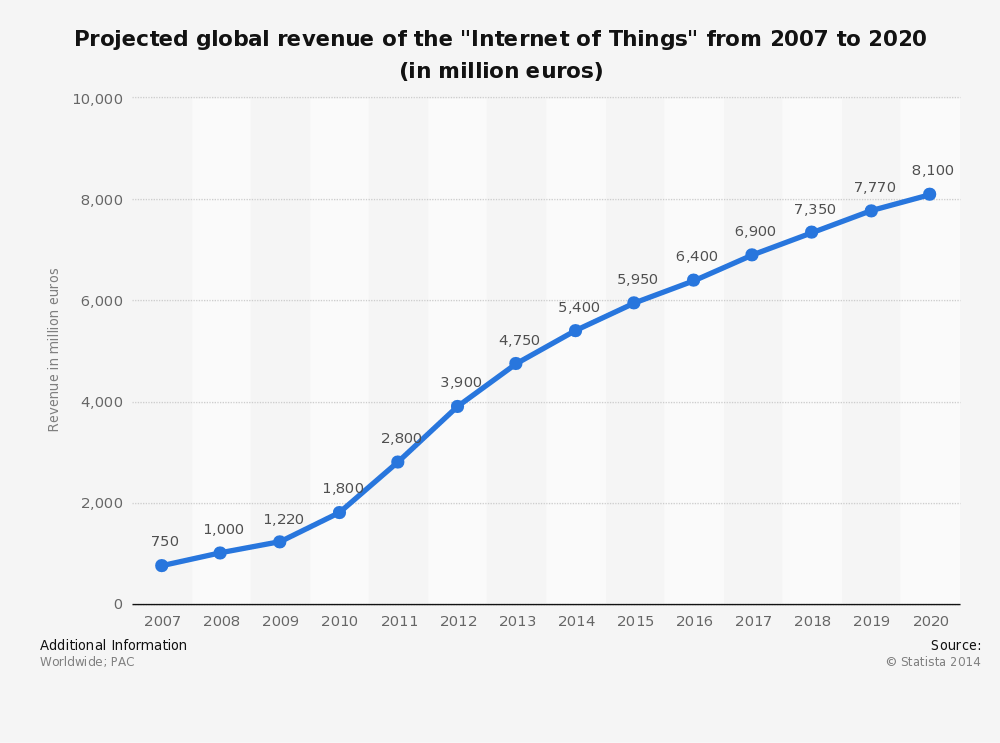5 predictions for the Internet of Things in 2016

This year has been quite a busy one for the internet of things (IoT), one of the most exciting opportunities for today’s enterprises. IBM invested $3 billion in its IoT business unit. AT&T announced a record 1.6 million connected device net adds, including 1 million IoT-enabled cars, in Q3. Earlier in the year, Samsung declared its commitment to connecting everything it sells by 2020, and General Motors shared that its OnStar 4G capabilities will generate $350 million in profit over the next three years.
As 2015 comes to a close, what’s in store for 2016? Here are five predictions for IoT and where it’s headed through the coming year.
- The “security of things” will take centre stage. In 2015, the market saw tremendous growth in the number of connected devices, and that proliferation gave rise to concerns about the security of IoT. Next year will be the one where IoT security takes centre stage – and the winners will be the solution providers who can help enterprises not only deliver connected services, but secure them, too.
- We will stop counting the “things” in favour of more important success metrics. By 2020, we could have 20 billion, 34 billion or maybe even 50 billion devices connected by IoT – depending on the analyst firm you ask. But the internet of things is ultimately not about “things”, it’s about service. In 2016, the analysts watching the IoT industry will shift their focus to put a premium on the quantifiable impact of new services (like revenue generated or new experiences enabled) instead of simply tallying device quantities. In fact, IDC added an amendment to its recent device count forecast to say that “by 2018, there will be 22 billion internet of things devices installed, driving the development of more than 200,000 new IoT apps and services”.
- For the first time, more new cars will be connected than not. In 2015, GM announced that every one of its new vehicles in the United States would ship with 4G-LTE embedded – and the automaker already has 1 million connected cars on the road. In 2016, we’ll see this trend expand greatly and, for the first time, the majority of new vehicles produced in the United States will be connected. We won’t hit the same tipping point globally in 2016, but initial strong growth indicates that connected cars will be the norm for all new vehicles produced worldwide within the next couple of years.
- Low-power wireless area network (LPWAN) technologies will not go mainstream. LPWAN technologies, such as France’s Sigfox, hold great promise and could one day contribute to the continued proliferation of IoT. But the LPWAN market is still in its infancy and far from ready, so we won’t see wide deployment of low-power technologies this year. Instead, 2016 will be the year of LPWAN partnerships, consolidation and marketing wars to determine which of the many players and standards will be victorious.
- The IoT market will align around a more precise lexicon. In 2015, IoT emerged from the hype cycle and began to become mainstream. In an attempt to claim relevance, lots of technology providers attached the IoT acronym to their names, resulting in a proliferation of companies talking about their IoT platforms, IoT applications, IoT solutions and more. Business savvy enterprises will demand accuracy and accountability, resulting in clearer definitions from IoT solution providers. Companies will need to articulate exactly what their IoT solution enables – whether that’s IoT application enablement, service lifecycle management, analytics or another function – and clearly demonstrate how they make it easier for enterprises to launch, manage and monetize IoT.
Little doubt remains regarding IoT’s continued growth. As IoT quickly becomes an imperative across industries and adoption continues to accelerate, companies will increasingly deliver services that generate new sustainable revenue sources while enhancing the experiences of their customers. Thousands of businesses worldwide are already reaping IoT’s rewards, and 2016 will be the year that more companies join the IoT revolution.
Have you read?
How the internet of tings will change your life
7 ways the internet of things will change your workplace
3 industries being changed by the internet of things
Author: Jahangir Mohammed, Founder and CEO, Jasper Technologies
Image: An employee sits inside a virtual reality connected car cockpit built by Segula Technologies during the first press day ahead of the 85th International Motor Show in Geneva March 3, 2015. REUTERS/Arnd Wiegmann
Don't miss any update on this topic
Create a free account and access your personalized content collection with our latest publications and analyses.
License and Republishing
World Economic Forum articles may be republished in accordance with the Creative Commons Attribution-NonCommercial-NoDerivatives 4.0 International Public License, and in accordance with our Terms of Use.
The views expressed in this article are those of the author alone and not the World Economic Forum.
The Agenda Weekly
A weekly update of the most important issues driving the global agenda
You can unsubscribe at any time using the link in our emails. For more details, review our privacy policy.

